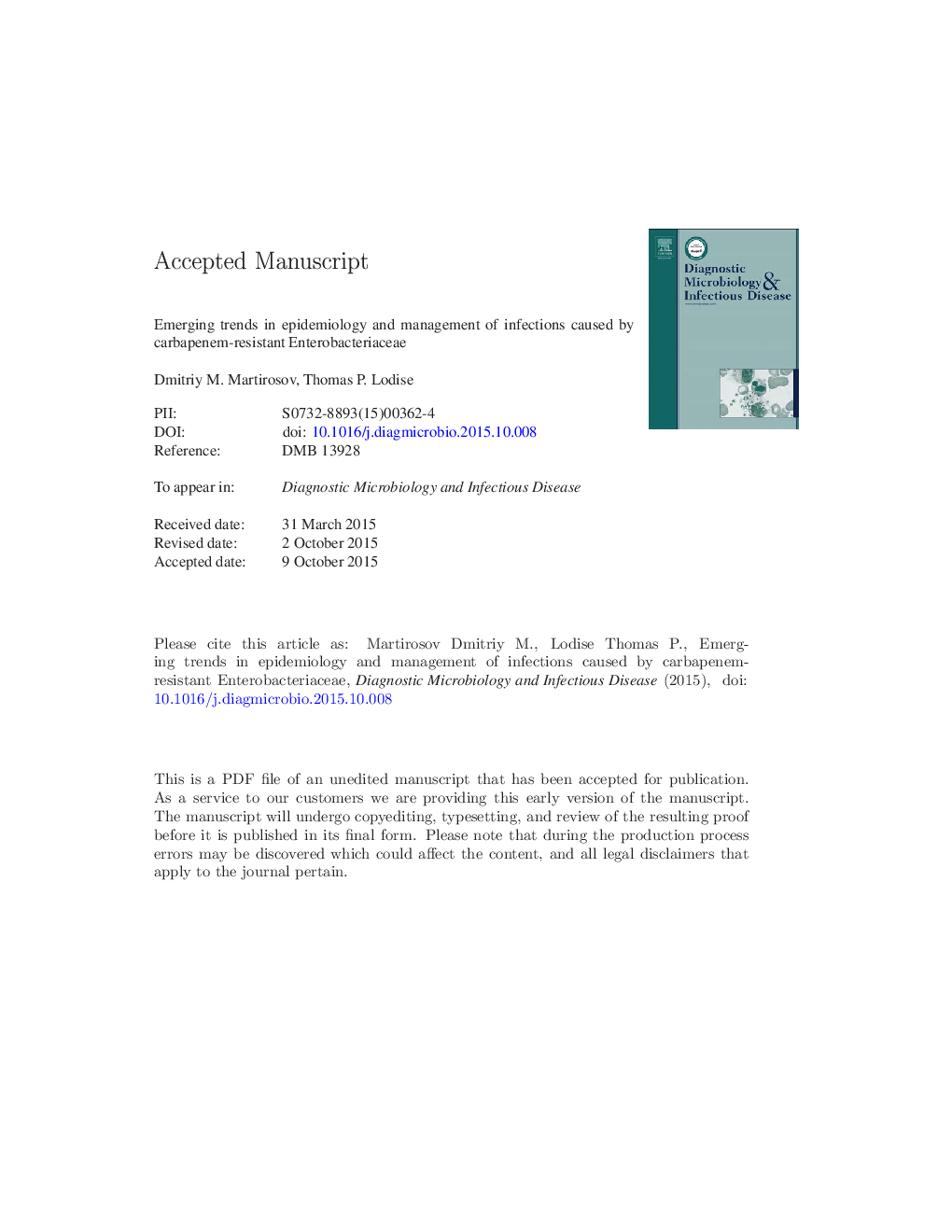| Article ID | Journal | Published Year | Pages | File Type |
|---|---|---|---|---|
| 6115512 | Diagnostic Microbiology and Infectious Disease | 2016 | 42 Pages |
Abstract
The recent emergence and spread of infections caused by carbapenem-resistant Enterobacteriaceae (CRE) are concerning because carbapenems have represented a last line of defense against resistant strains of gram-negative pathogens. Existing therapies against CRE include tigecycline, the recently approved drug ceftazidime-avibactam, and older drugs not widely used in recent years, such as colistin, fosfomycin, and aminoglycosides. Best practices for use of the available drugs are not well defined. New therapeutic options with activity against CRE offer the opportunity to enhance our current approach to managing patients with infections due to CRE. The purpose of this report is to review the evolving epidemiology and treatment of infections due to CRE. As part of the treatment overview, this manuscript will discuss supportive data for antibiotics currently being used in the treatment of infections due to CRE, as well as those recently approved and in late-stage development.
Keywords
Related Topics
Life Sciences
Immunology and Microbiology
Applied Microbiology and Biotechnology
Authors
Dmitriy M. Martirosov, Thomas P. Lodise,
